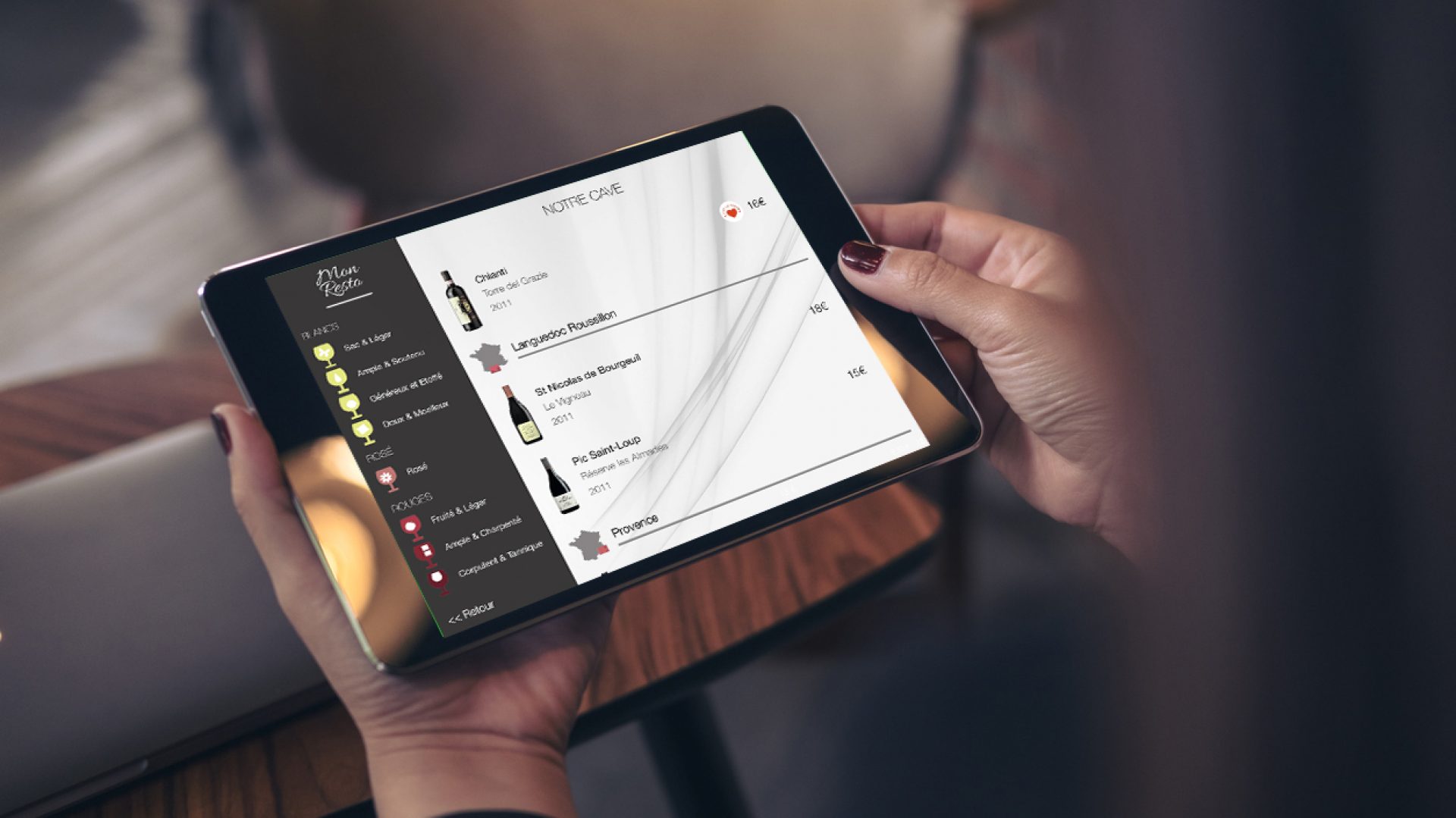The digital transformation of restaurants is accelerating: many restaurants have moved their wine lists on iPads. Others have questioned the benefits, timing and impact of such a change for their establishment. In this article, we summarize the motivations of these restaurants and the benefits that our customers are enjoying from their digital wine list, after having ran conversations with more than 200 establishments worldwide.
COVID19: the paper format, a transmitter of the virus ?
The COVID-19 pandemic has forced many restaurants to move away from paper. Indeed, several studies have shown that the virus can survive on a paper surface for several hours, which has caused concern to many customers. Indeed, a wine list typically moves from one table to another during the entire service and therefore risks transmitting the virus to all the restaurants’ guests.
Restaurant owners had to adapt and moved away from the paper format. The menu was replaced by an ardoise, or in some establishments, by the waiter reciting from memory the list of dishes and menus. The majority have reduced the numbers of dishes available on the menu.
Nevertheless, for the wine list, the issue was much more complex: a restaurant typically offers between 120-250 wines on their list, while some restaurants offer 1200-2000 wines (this is the case of our customers Le Gavroche in London, Flocons de Sel in Megève or Le Cantou in Toulouse). The Ardoise is no longer an option, since it can only offer a short selection of the cellar.
Logically, restaurants which wanted to continue to offer a fine wine list have turned to a digital support such as an iPad. This format allows to present the entire wine list (as well as that of the dishes) in a format that can be cleaned and disinfected very easily. Other establishments have turned to QR-Code solutions.

The paper format lacks flexibility
A wine list evolves according to the season, the dishes elaborated by the kitchen, the market and the selections/preferences of the sommelier/cellar owner. A paper format does not allow for easy updating of the wine list. The result is that most establishments sooner or later find themselves with an obsolete wine list and mistakes such as:
- incorrect vintage
- incorrect price or volume
- references not anymore in stock
These errors result in customer frustration and degraded service. As a matter of fact, nothing is more frustrating for a customer to see the sommelier or waiter come back to him/her and tell him/her that the reference ordered is no longer in stock.
Finally, the paper wine list, because of its lack of flexibility, does not allow to highlight a category of wines (color, domain) according to the dishes or the season.
In contrast, a wine list on an iPad offers customers a wine list that is always up to date. Adding and removing a wine from the wine list takes only a few seconds. At COENA, we have noticed a significant change in the behavior of our customers over the years since they switched to a digital wine list. With a paper wine list, these restaurants were updating their menu 2-3 times a year. These updates were time-consuming and costly. Once migrated to a digital wine list, the same restaurants typically update their wine list 2-3 times a month.

A wine deserves much more than a line in a “cellar book”.
At COENA, we have always been surprised to see wines, the drinks that trigger the most passionate conversations between customers and restaurateurs, and which represent the highest margins in a restaurant, being listed as a line within a book of several dozen pages. Impossible to highlight a specific wine domain, or a vintage year. The majority of customers miss the beautiful references and rely on price as an essential criteria for their choice.
The work of the sommelier is then particularly important. Indeed, without him, this dry list on paper hardly sells. Only connoisseurs will know how to decode the list.
With a wine list on iPad, the content is tuned to the customer’s profile. The connoisseur will quickly find his favorite wines by browsing the wine list by color and region. A novice will be guided by the sommelier’s selection (updated daily), a tasting profile (tannic and corpulent red) or even a food/wine pairing.
Don’t be fooled: a wine list on iPad does not replace the sommelier: it nevertheless adds a more interactive and enriching experience of discovering a wine cellar than a book, and can be very useful when the sommelier is absent for a couple of days.

Digitizing does not mean giving up the authenticity of a wine list.
One of the objections or inhibitions that frequently comes up in our conversations with customers is the loss of authenticity associated with the transition to a digital wine list. This fear is not limited to the restaurant industry: technology tends to divide people into (often passionate) technology enthusiasts and more traditional people who see the same technology as an enemy of authenticity, a symbol of isolation in our society, or a risk to jobs.
Our answer to those objections has remained the same for the last five years, and has become even more relevant in 2020: technology is useless if it does not add value in term of helping people, integrate/boost processes and improve the customer experience. Digital is not the end of service: service will always be of critical importance in a restaurant. Every restaurant owner knows that. Digitizing the wine list is about allowing customers to better browse and understand the wine list. It is about avoiding proposing wines that are not in stock. It is about offering a different and unique experience of exploring a cellar.
Finally, digitizing a wine list does not take away its soul: some solutions on the market tend to transform a wine list into a “photo catalog”, via large photos, taking up most of the screen space, and a design stolen from the latest trends in website design (large colorful blocks, animations…) or Mac Donald- kind of orders booths. At COENA, we made the initial bet to keep the authenticity of a wine list and let technology fade away like magic in the background. This is why our design is highly customizable to fit with the brand of the establishment. The templates used to display the wine lists also varies depending on the number of wines on the list:
If this article made you want to try a wine list on iPad, we offer a free demo version if you own an iPad. Otherwise, we would be happy to give you a demonstration via Zoom/Google Hangouts and answer your questions.
Just leave us your contact information in the form below:





